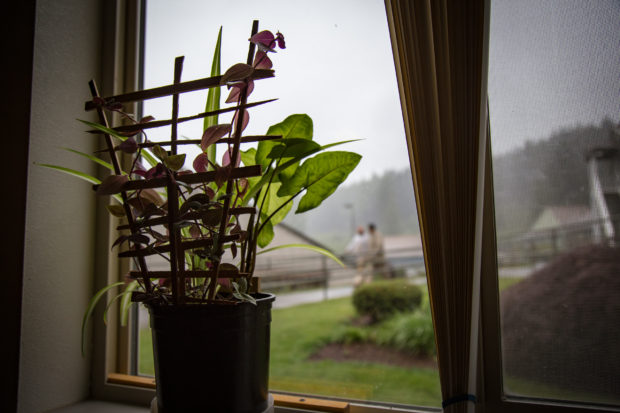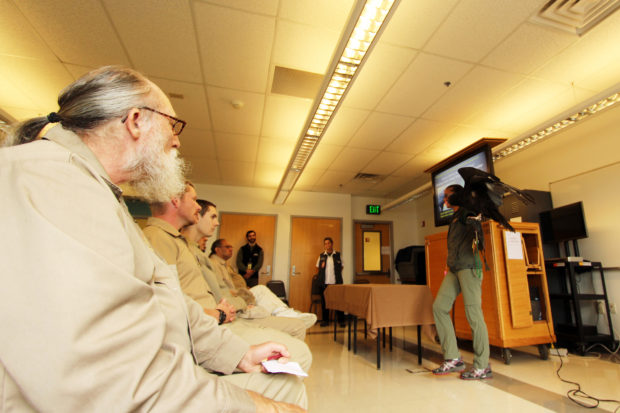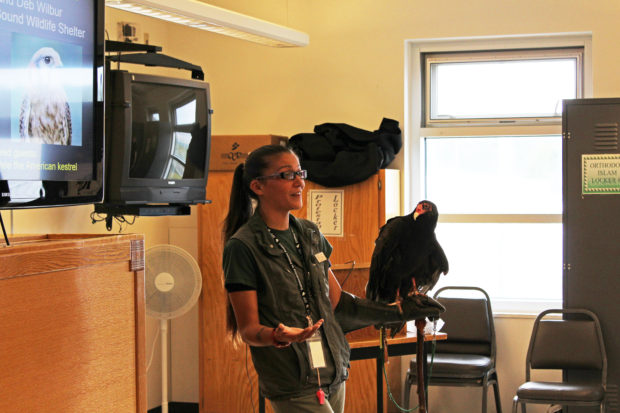by Joslyn Rose Trivett, SPP Education & Outreach Manager, and Liliana Caughman, SPP Lecture Series Coordinator
This issue is dedicated to Just Sustainability—sustainability redefined to include the needs and inputs of all populations and demographics.
Historically, the environmental movement has focused on the needs and views of a relatively small segment of Americans. This approach has often overlooked the sustainability needs and interests of people beyond the environmental mainstream. People of color, people without college degrees, people from the working class or living in poverty are rarely afforded the benefits of the environmental movement, such as sustainability education and easy access to nature. These populations also bear the brunt of most environmental hazards in the country. Just Sustainability sees cultural diversity as essential to the environmental movement, and resolving long-ignored environmental injustices as the primary focus.

Dwayne Sanders talks about growing starts for the prison gardens and houseplants. His program is in Washington State Penitentiary’s Sustainable Practice Lab, which hosted nearly 300 program tours in a year; tour guide and program clerk Ray Chargualaf stands in the background. Photo by Ricky Osborne.
Even less attention has been paid to how cultural diversity would benefit the environmental movement itself. To take on the scale and complexity of environmental challenges, the environmental movement needs more diverse buy-in and input. Extending ownership opens up myriad new ways for taking on environmental problems and creating solutions. Affluent, highly educated people cannot achieve national or global sustainability without help. “Sustainability will be achieved, if at all, not by engineers, agronomists, economists and biotechnicians but by citizens.” (Prugh, Costanza and Daly 2000)

Butterfly technicians pose in front of educational poster set up for visiting Girl Scouts Behind Bars. Photo by Seth Dorman.
What does inclusiveness look like? It means inviting input and investment from all citizens and promoting sustainability programs in all communities and institutions. It requires us to learn across differences. Inclusive sustainability, Just Sustainability, is a path of mutual transformation.

Lecture series students take in a presentation on raptor biology and conservation from West Sound Wildlife. Photo by Joslyn Rose Trivett.
In Washington State prisons, we have found willing, inventive champions of sustainability. They have transformed prison culture and operations. Because of their work, we are better prepared to transform the world at large. SPP staff asked a few incarcerated SPP partners—most of them Roots of Success instructors—if they would write what Just Sustainability means to them. This newsletter shares five responses, and we will publish several more on our blog in the coming months.

Paula Andrew, a member of DOC staff and a champion of SPP programs, and Green Track program coordinator Emily Passarelli enjoy the chickens at Washington Corrections Center for Women. Photo by Ricky Osborne.










 The prison has also set the standard for sorting waste. Without any fancy equipment, they have figured out how to turn the waste stream into valuable commodities. They sort their waste at the source, or “up stream.” Every day, porters (we call them waste stream technicians) sort the waste stream into dedicated cans, and the results are impressive. Nearly everything is reclaimed or recycled; all that’s left is a tiny can of mixed-materials (see photo).
The prison has also set the standard for sorting waste. Without any fancy equipment, they have figured out how to turn the waste stream into valuable commodities. They sort their waste at the source, or “up stream.” Every day, porters (we call them waste stream technicians) sort the waste stream into dedicated cans, and the results are impressive. Nearly everything is reclaimed or recycled; all that’s left is a tiny can of mixed-materials (see photo).



































